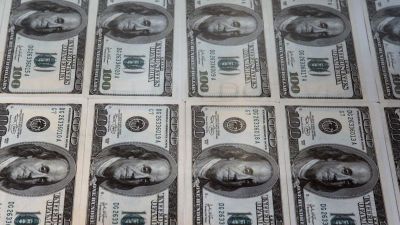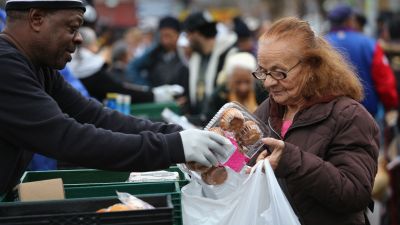
This article is adapted from Unsanitized: The COVID-19 Daily Report put out by The American Prospect. You can find the original publication here.
First Ballot
A strange thing happens with elections in the modern data-driven era. People believe that access to public polling gives them real-time information into the electoral picture, and if they read enough of the Real Clear Politics average and the FiveThirtyEight forecast, they can handicap every race and be a hit at parties.
This neglects the fact that an army of professionals are paid to know more about these races than the average doomscroller. There’s a significant amount of private polling, and what of those internal polls get shared publicly often puts the best spin on it. There’s district-level polling of the presidential race that the pros selectively leak to polling analysts; David Wasserman of the Cook Political Report has talked a lot about that this year, and how it shows critical deficiencies for Trump in a way it didn’t in 2016.
One shorthand for how the pros think about their chances in various races is to look at their late-game decisions for moving around money. Campaigns cancel ads or move a bunch of money in ads into races in late October, and that information can be found. When the House or Senate campaign arms, or the presidential campaigns, or outside groups with a lot of money to spend, make sudden moves late, the assumption is they’re reacting to something. With limited funds, they want to maximize them, and not waste them on an obviously out-of-reach race. At some level, the ad cancellations are more accurate than the polls on the big questions of who will win easily and who’s still in a fight.
So what does that tell us right now?
Let’s start with the presidential race. The big story yesterday is that the Trump campaign pulled most ads out of Florida for the final week. The RNC picked up some but not all of the slack. Trump is focusing ads largely on four Northeast and Midwest states: Michigan, Minnesota, Ohio and Pennsylvania. Biden, armed with a bigger war chest, is spreading money around liberally, in pretty much every close state except Texas.
You have to separate out the fact that Trump’s grifter campaign stole a bunch of the campaign dollars and put them at a disadvantage, and that Biden has a huge lead in cash on hand. But this says to me a few things. First, Trump’s campaign has given up on Wisconsin, which is in the same region as the states he’s competing on air in but is getting no money. Second, Trump’s team feels he can get away without much ad support in many states he won in 2016, like Florida, Georgia, North Carolina, and Arizona (especially the latter three). Third, Biden’s camp has a lot of paths to victory and doesn’t need Texas to be on the list of them. However, Mike Bloomberg has supplemented with a $15 million ad buy in Texas and Ohio, based explicitly on his own polling, so maybe Biden’s just letting outside groups do the work there. (Kamala Harris is visiting several cities in Texas on Friday; travel patterns is another tell from campaigns that goes beyond polling.)
Advertising in presidential races have questionable impact; everyone knows who’s running and most people have made up their minds. At the district level this is much more critical. The parties have an idea of who can actually win and who can’t, and are ruthless down the stretch in positioning resources. Sometimes they’re wrong, but it’s a good guide to what they’re thinking.
First off, Democratic congressional candidates are swamping Republicans on the air, by more than 2:1. GOP candidates with no chance of winning running against Democratic celebrities like Maxine Waters and Alexandria Ocasio-Cortez are the only ones spending large amounts of money, more than some Republican Senate candidates!
That makes the GOP outside groups much more critical. The Congressional Leadership Fund, the main House Republican Super PAC, is propping up Republican House candidates in TX-22, NY-22, VA-05, and MN-01; three of those are defending Republican-held seats (only NY-22, where Claudia Tenney is a former Congresswoman seeking her seat back, would be a pickup). Interestingly, CLF made a late ad buy in the district of Cheri Bustos, the head of the Democratic Congressional Campaign Committee, who represents a somewhat purple district. That would be big for bragging rights but doesn’t necessarily change the overall picture. The National Republican Congressional Committee (NRCC) just made a $14 million ad buy in 28 House races; only 10 of them are currently held by Democrats. This suggests that Republicans are just trying to limit the damage.
Daily Kos Elections has put out a “Triage tracker” showing last-minute ad cancellations. Republicans and Democrats cancelled their late ads in ME-02, showing confidence that Rep. Jared Golden (D) has that sewn up. The DCCC cancelled reservations for incumbents in PA-08, MI-08, MI-11, and TX-07, expressing confidence in those seats. And the NRCC bugged out of TX-22 (an open seat where Democrat Sri Preston Kulkarni nearly won in 2018), even though the Congressional Leadership Fund is spending there. DK Elections made 18 race rating changes yesterday, and 15 of them were favorable to Democrats.
In short, Democrats are going to hold the House, and the question is only how many seats they’re going to pick up.
Pandemic Watch
There’s not going to be any stimulus package before the election, and hopes for one after the election hinge on the results. I could take a “victory” lap for being aware that there was no way this was going to happen but there’s no victory here; it’s a deeply sad situation that will have millions of people needlessly suffer.
We now must rely even more on the Federal Reserve, which seems to do its best work getting journalists to write glowing profiles about Jerome Powell. For a rather different take, read Katie Porter’s letter to Powell about the central bank buying JPMorgan Chase corporate bonds.
Also we have a terrific piece today from Rachel Cohen about what the science says about transmissibility of the virus in children and the efficacy of reopening schools. With close to 800,000 kids infected and the serious implications of leaving kids behind in early learning, it’s one of the most fraught debates of the pandemic. Read it!
Days Until the Election
6.
Today I Learned, Election Edition
- Brett Kavanaugh is an idiot on voting rights but the election isn’t automatically, inescapably going to be stolen, says Rick Hasen. (Washington Post)
- Trump strands supporters at the Omaha airport in freezing cold, in a metaphor for what he thinks of them? (Iowa Starting Line)
- Democrats shift messaging in the final week, telling voters to NOT mail in ballots, but to use dropboxes, go directly to precinct locations or early voting sites, or however they can be delivered. (Politico)
- The Trump website was hacked by crypto scammers. (New York Magazine)
- Darrell Issa losing in his comeback would be something, though this is an internal poll showing a tossup. (Political Polls/Twitter)
- Facebook is supposed to be banning political ads in the final week but some of Trump’s are getting through. (HuffPost)
- The poll everyone’s taking: can you tell a Trump fridge from a Biden fridge? (New York Times)




